In 2022, individuals who fell victim to scams lost an average of USD 557.¹ However, relying on banks for refunds may not always be a viable option. Continue reading to discover how you can reclaim your lost funds.
Scammers are becoming increasingly cunning with each passing year, utilising the latest technological advancements t enhance their fraudulent schemes. From sophisticated online dating scams to traditional phishing tactics, it’s almost unavoidable to encounter these deceitful practices today—but it doesn’t have to lead to disaster.
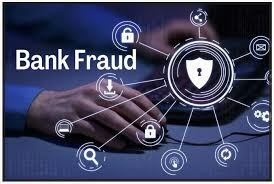
Fortunately, many banks do offer refunds for scammed funds, though eligibility can vary based on several factors. Keep reading to understand the refund process and learn how to protect yourself from becoming a scam victim in the future.
Will banks reimburse scammed money?
In numerous instances, banks are willing to refund money lost to scams. Legally, they are typically obligated to provide refunds for unauthorised transactions. However, if you authorised the transaction—such as directly paying a scammer who then disappeared with your money—the possibility of a refund may hinge on various factors, including the payment method, how quickly you report the incident, and your bank’s specific policies.
What steps to take after being scammed
If you believe you’ve been scammed, there are actions you can take to limit the damage and recover your money. Here’s what you should do right after discovering you’ve been scammed:
Cease all communication with the scammer: While it may be tempting to keep in touch with the scammer in hopes of recovering your funds, this tactic is unlikely to yield positive results. Scammers thrive on deception and will not respond to feelings of guilt, pleas for help, or even threats of legal consequences.
Inform your bank and credit card company: As soon as possible, contact your bank or credit card provider to request a new account number, cancel your compromised card, and potentially recover any fraudulent charges.
Secure your credit report: Get in touch with one of the three major credit bureaus to set up a fraud alert on your credit report. This alert will require creditors to verify your identity before they issue new credit in your name. Alternatively, you can implement a credit freeze across all three bureaus, which stops anyone, including yourself, from opening new credit accounts until you decide to lift the freeze.

Update your passwords: If you have shared any login information or personal details with the scammer, change those credentials right away. Ensure that you create robust passwords for all your accounts, prioritising those linked to your finances.
Alert the local authorities: Contact your local police department to file a report regarding the scam. Having a police report can be beneficial for potential refunds later on, and reporting the scammer may help protect others from falling victim.
File a report with the FTC: You must also submit a report about identity theft to the Federal Trade Commission (FTC), either online or by calling 1-877-FTC-HELP.
A visual guide indicating whom to contact after experiencing a scam.
Around 15% of consumers in the U.S. have fallen victim to scams within the past year—if you’re among them, you’re not alone. However, you could opt to join millions of satisfied customers who rely on LifeLock for identity protection. With a LifeLock Standard subscription, you can benefit from reimbursement of up to $25,000 for stolen funds, coverage for personal expenses related to identity theft, and access to up to $1 million for legal assistance if necessary.
When a bank decides to reimburse you for money lost to a scam, it typically follows an examination of your complaint. However, the outcome can vary based on the nature of the scam and the bank’s specific guidelines. Here’s a breakdown of how your bank might respond to a refund request based on different scenarios:

If you notice an unauthorised charge:
If you identify a questionable transaction and report it within the designated timeframe—usually within 60 days of receiving your bank statement that includes the unauthorised charge—the bank will initiate an investigation. Should they determine that you did not authorise this transaction, you will be refunded. If you haven’t already done so, promptly cancel the card linked to that charge and request a replacement from your bank.
If you’ve sent money to a scammer:
In cases where you’ve already transferred funds to a scammer, your chances of being reimbursed by your bank depend on the payment method used. Some methods offer better chances for refunds than others. For instance, if you paid in cash, the likelihood of receiving a refund from the bank is minimal.
Here’s how banks generally handle refunds based on transaction types:
– Credit cards: Transactions made with credit cards are often the easiest to reverse, as the chargeback process is straightforward and well-defined. Additionally, many credit card providers offer robust consumer protection.
– Wire transfers: Unfortunately, wire transfers are usually irreversible, making it significantly more challenging to recover your money, even if you report the scam in time.
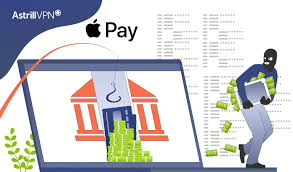
– Payment apps: Funds sent through payment apps typically won’t be refunded by your bank since these transactions resemble direct cash transfers. However, some apps like Cash App may have their policies for customer protection, which could allow for a refund through the app itself.
– Cryptocurrency: Transactions involving cryptocurrency are generally not reversible, which means recovering your funds is highly unlikely.
Regardless of how you made the payment, it’s essential to inform your bank about the fraudulent activity to explore any potential recovery options they may offer.
If your bank account has been breached
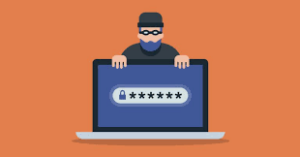
In general, if someone gains unauthorised access to your account, your bank is likely to reimburse you, provided you report the incident quickly. However, delaying your report can increase your financial responsibility, meaning the bank could hold you accountable for some or all of the lost funds. This underscores the importance of routinely checking your account transactions.
How quickly can I expect my bank to return stolen money?
Disputes regarding credit card charges may take as long as 90 days to resolve, whereas banks usually have up to 10 business days to investigate fraudulent debit card transactions. The exact time frames can vary based on the bank and its specific procedures.
Credit card disputes
When you contest a charge with your credit card provider, they are required to acknowledge receipt of your dispute within 30 days and complete their investigation within 90 days, as stipulated by the Fair Credit Billing Act. If they determine that the charge was indeed fraudulent, they will credit your account accordingly. Some banks might also provide provisional credit during the investigation period.
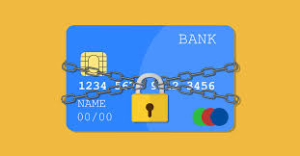
Debit card disputes
Since debit card transactions directly affect your account balance, banks typically have a 10-business-day window to look into unauthorised charges. If they are unable to finalise their investigation within this period, they will often grant you temporary credit for the disputed amount while they continue to investigate.
Recovering funds from a scammer when using alternative payment methods
If you utilise alternative payment methods such as wire transfers, cash, gift cards, or payment apps, banks are generally less inclined to refund the lost money. However, certain types of insurance, like homeowner’s or renter’s insurance, cyber insurance, or business crime insurance, might offer reimbursement after a scam.
Depending on how you made the payment, consider the following strategies to try and reclaim lost funds:
Reach out to the gift card issuer: If you inadvertently sent gift cards—such as those from Amazon, Apple, or Target—to a scammer, you should contact the issuing company for assistance.
Dispute the transaction with your payment app: If you have transferred money to a scammer using apps like Venmo, PayPal, or Zelle, consider filing a dispute directly with the payment service.
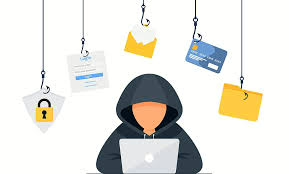
Contact the U.S. Postal Inspection Service: If you paid a scammer via check or cash sent through the mail, contact the U.S. Postal Inspection Service and ask them to intercept the package.
A visual guide on recovering funds after falling victim to a scam based on the method of payment.
Preventing online scams that target your bank account
The most effective way to avoid the hassle of seeking refunds from your bank is to steer clear of prevalent online scams from the outset. Here are some strategies to safeguard your personal information and keep it away from scammers:
– Avoid making payments over the phone for transactions you didn’t start.
– Remember that banks and government agencies will never ask for payments or sensitive information via phone calls. If you’re uncertain, hang up and contact them through official channels yourself.
– Refrain from clicking on links in emails or texts from unfamiliar sources, as they may be scams or contain malware.
– Utilize strong passwords and activate two-factor authentication (2FA).
– Don’t conduct financial transactions using public Wi-Fi unless you’re connected through a VPN to secure your data.
– Trust your instincts if something feels off.
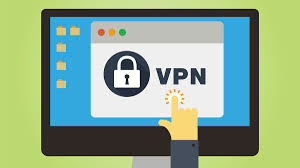
Maxthon
Maxthon has carved out a unique niche in the crowded browser marketplace by focusing on delivering a user experience centred around safety and confidentiality. With a dedicated approach to safeguarding personal information and online behaviour from various potential threats, Maxthon employs an array of practical techniques to protect user data. By utilising cutting-edge encryption technologies, this browser ensures that sensitive information remains secure and private throughout all online activities.

When it comes to enhancing privacy during web browsing, Maxthon truly shines. Every aspect of this browser is thoughtfully designed with features that prioritise user privacy. From its effective ad-blocking capabilities to extensive anti-tracking measures and a dedicated incognito mode, these tools work harmoniously to eliminate intrusive ads and thwart tracking scripts that could disrupt your browsing experience. Consequently, users can explore the internet with greater confidence. The incognito mode further enhances this feeling of security, allowing individuals to navigate online with added assurance.
In today’s fast-paced digital landscape, where online interactions can change at a moment’s notice, ensuring personal safety while exploring the internet is essential. With the complex web of connections available, selecting a web browser that prioritises security and privacy is imperative. Among the many competing options, the Maxthon Browser stands out as an exceptional choice, addressing these critical issues without imposing any costs on its users. This advanced browser comes equipped with a variety of built-in tools, including a powerful ad blocker and multiple anti-tracking features—key elements aimed at boosting your online privacy.
